
Do you have a question about the Campbell Hausfeld WL6000 Series and is the answer not in the manual?
| Model | WL6000 Series |
|---|---|
| Horsepower | 3.7 |
| Power Source | Electric |
| Motor Type | Induction |
| Tank Capacity | 60 gallons |
| Voltage | 230V |
| Phase | Single |
Explains the purpose and applications of oilless compressors for DIY use.
Defines DANGER, WARNING, CAUTION, and NOTICE symbols used in the manual.
Instructions for inspecting for damage and tightening fittings before use.
Mandatory filtration requirements for applications involving breathing air.
Fundamental safety rules for operating high-pressure systems.
Adherence to codes, use by trained personnel, and maintaining a safe work area.
Use of PPE, pre-operation checks, safe handling, and avoiding hot parts.
Protecting the tank, draining moisture, and safe air release procedures.
Precautions during spraying operations and use of solvents.
Selecting a clean, well-ventilated area with adequate clearance.
Warning about the unit being top-heavy and requiring secure mounting.
Requirements for qualified electricians and adherence to codes.
Proper grounding procedures to reduce electrical shock risk.
Prohibition of extension cords to avoid power loss and warranty voidance.
Diagram and descriptions of key compressor components.
Steps for the initial 30-minute break-in period for pump parts.
Explanation of AUTO and OFF modes for the pressure switch.
Instructions for periodically checking the safety valve.
How to control and adjust air pressure using the regulator knob.
Understanding outlet and tank pressure gauges.
Regular checks and cleaning of components like the air filter.
Function of the protector and common causes for frequent activation.
Guidelines for storing the compressor and hose when not in use.
Diagnosing and correcting issues when the compressor fails to start.
Troubleshooting motor issues like humming or slow operation.
Identifying causes and solutions for repeated fuse blowing.
Addressing frequent shutdowns due to overheating.
Diagnosing and fixing noises and excessive vibration.
Diagnosing causes for pressure loss when the compressor is off.
Troubleshooting low discharge pressure or reduced air output.
Addressing high levels of moisture in the discharged air.
Diagnosing why the compressor does not shut off automatically.
Identifying and fixing air leaks from the unloader on the pressure switch.
Details on warranty period, what is covered, and what is excluded.
Obligations of the purchaser for warranty claims and product care.
Procedures for obtaining repair or replacement under warranty.


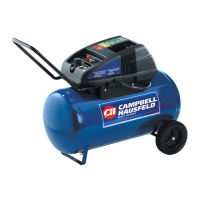
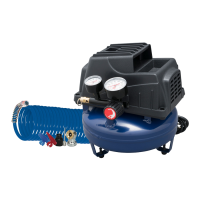
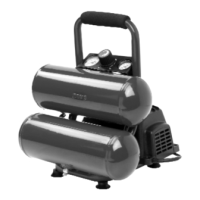
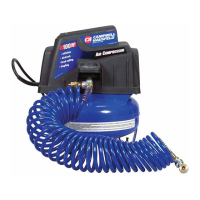
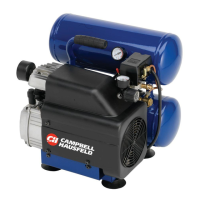
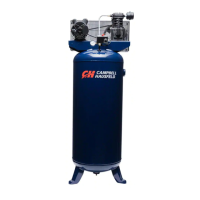
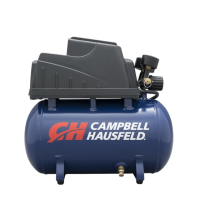


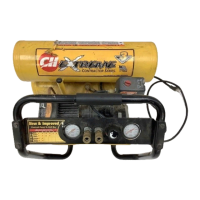
